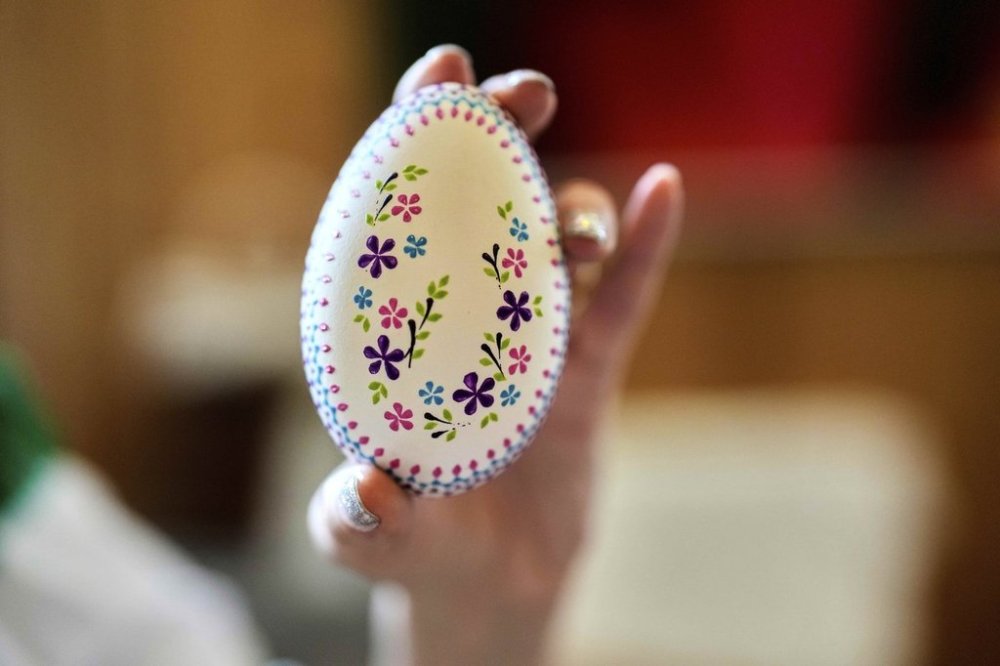These Easter eggs have been decorated by the Sorbian community for thousands of years
Advertisement
Read this article for free:
or
Already have an account? Log in here »
To continue reading, please subscribe:
Monthly Digital Subscription
$0 for the first 4 weeks*
- Enjoy unlimited reading on winnipegfreepress.com
- Read the E-Edition, our digital replica newspaper
- Access News Break, our award-winning app
- Play interactive puzzles
*No charge for 4 weeks then price increases to the regular rate of $19.00 plus GST every four weeks. Offer available to new and qualified returning subscribers only. Cancel any time.
Monthly Digital Subscription
$4.75/week*
- Enjoy unlimited reading on winnipegfreepress.com
- Read the E-Edition, our digital replica newspaper
- Access News Break, our award-winning app
- Play interactive puzzles
*Billed as $19 plus GST every four weeks. Cancel any time.
To continue reading, please subscribe:
Add Free Press access to your Brandon Sun subscription for only an additional
$1 for the first 4 weeks*
*Your next subscription payment will increase by $1.00 and you will be charged $16.99 plus GST for four weeks. After four weeks, your payment will increase to $23.99 plus GST every four weeks.
Read unlimited articles for free today:
or
Already have an account? Log in here »
Hey there, time traveller!
This article was published 14/04/2025 (207 days ago), so information in it may no longer be current.
SCHLEIFE, Germany (AP) — Anke Hanusch dips her tool into dark blue wax and dots it precisely on a yellow-dyed Easter egg in her hand. Back and forth, wax to egg, egg to wax, as the honeycomb pattern grows.
The intricate motif means the egg will ultimately be a gift from a godparent to their godchild, to bestow diligence and a good work ethic upon the youngster.
The tradition of decorating Easter eggs is part of the culture of the Slavic-speaking Sorbian ethnic minority in Germany. Modern-day Sorbs are descended from Slavic tribes in Central and Eastern Europe who settled in Germany some 1,500 years ago.

About 60,000 Sorbs currently live in Germany, split between the federal states of Saxony and Brandenburg.
Easter is the biggest holiday of the year
Stephanie Bierholdt, an employee at the Sorbian Cultural Center in Schleife, a town just 16 kilometers (10 miles) from the Polish border, said Easter is the biggest holiday of the year for Sorbs and people travel home to celebrate with their loved ones.
“The best thing is that this tradition is still alive in families,” she said.
Bierholdt, Hanusch and other members of Schleife’s Sorbian community gathered at the cultural center on April 6, two weeks ahead of the holiday, to celebrate their heritage through Easter eggs and traditional folk costumes, songs and dances. Sorbian egg decorating dates back to the Middle Ages.
From chicken eggs to emu eggs
Hanusch wore the red folk costume and bonnet of an unmarried woman; married women wore green. She was among more than 30 artisans selling their Easter eggs at the cultural center. Her prices ranged from the cheapest decorated chicken egg for 7 euros ($7.72) up to 90 euros ($99.28) for a painted emu egg.
The decorating can take between 90 minutes and six hours, depending on the techniques used, the motif and size of the egg. The artisans use a needle or the tip of a goose feather quill, cut in different ways, to draw the designs.
The egg artisans said the worldwide bird flu outbreak, and subsequent egg shortage and price hikes, have not yet affected their craft — though they added that it’s always best to get eggs directly from a farmer rather than a supermarket.
Hanusch, who is Sorbian on her father’s side, is learning to speak the Slavic language. She said she and other Sorbian children start decorating Easter eggs as young as two, from when they can first hold a pencil. Many only do it during the Easter season throughout childhood, but Hanusch continued with the skill and became a teacher to others, including her niece.
“I think it’s a valuable cultural asset that needs to be preserved,” she said. “It would be a shame if it were to become extinct.”
The Free Press acknowledges the financial support it receives from members of the city’s faith community, which makes our coverage of religion possible.

